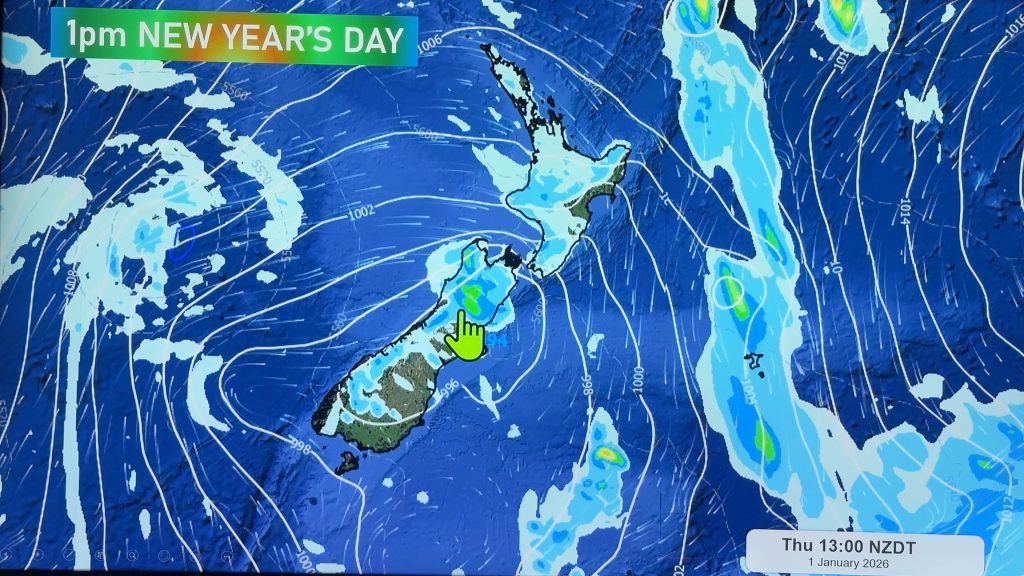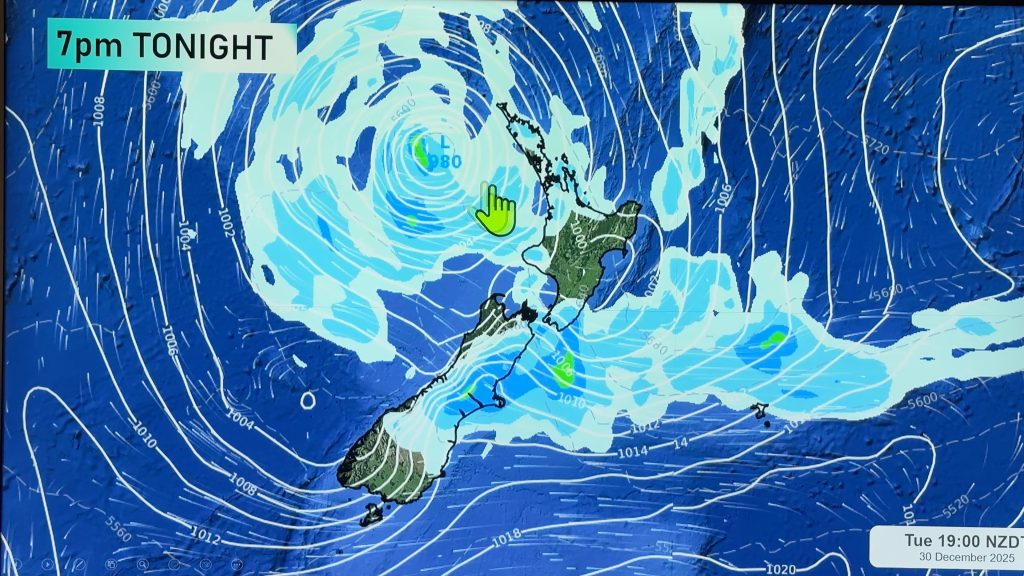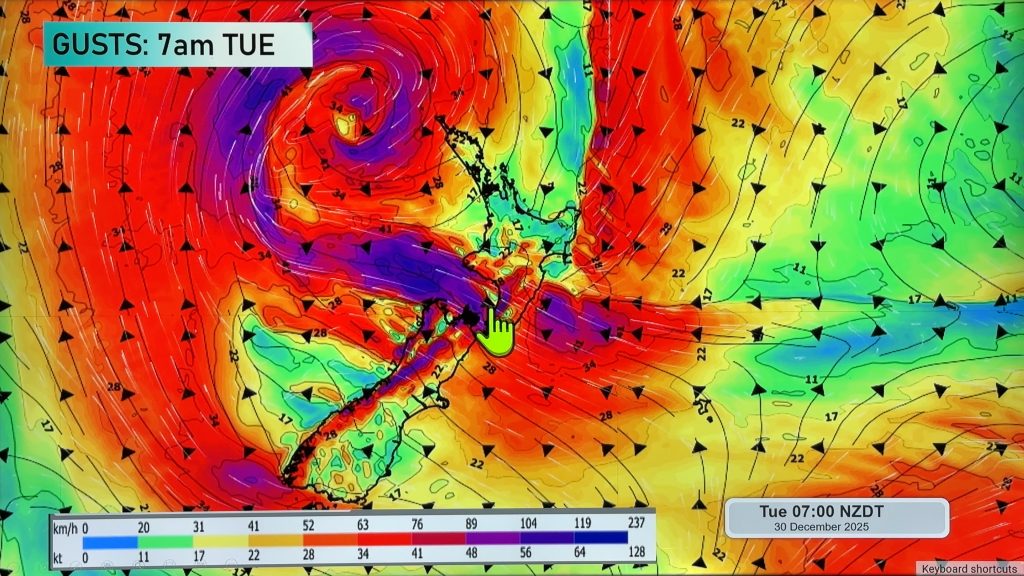Monday Newsfeed: Wind & rain in north, driest in south, as high moves away & Tasman Sea low grows
14/07/2024 7:07am

> From the WeatherWatch archives
Patchy rain and showers move into the country over Monday and early Tuesday, thanks to a large low pressure zone growing to the west of NZ. In fact a couple of lows are merging into a storm near Tasmania – where severe weather is most likely.
The rain coming into NZ is fairly detached from the low itself and the stormy stuff, although Monday may see gales and areas of heavy rain in the northern North Island, and windier nor’easters in some other exposed places elsewhere in NZ. Rain will be broken up as it moves through with some isolated heavy falls and for others only low totals.
Wind will be due to both the growing low pressure zone over the Tasman Sea and the strong high pressure zone to NZ’s south-east.
The record breaking anticyclone from last week remains strong to the south-east of NZ and it will continue to hold up low pressure and rain clouds out over the Tasman Sea for much of Sunday. Into next week the low looks to remain more of an Australian issue, but forecasters here are keeping a close eye on it.
For those in the lower South Island the next 7 days will lean drier than average.
IN LIMBO THIS COMING WEEK
This week’s weather looks ‘messy’ as we’re in limbo between the departing strong high and a fairly strong low on the Australian side of the Tasman Sea. Some areas will see rain clouds return, others – especially further south – remain drier with clearer skies (and that includes our southern ski fields for now).
Rainfall doesn’t look overly concerned for the North Island over the next 7 days at this stage – while much of the South Island looks to remain drier than average, especially in the east and south.
We’ll have more details in our Monday weather video.


- WeatherWatch.co.nz
Comments
Before you add a new comment, take note this story was published on 14 Jul 2024.





Add new comment
andy cross on 12/07/2024 11:25pm
Hey Philip that’s brilliant as ever, I’m learning so much, thank you. What exactly is the blue line? Does it show an actual temperature? What temperature? Thanks
Reply
WW Forecast Team on 13/07/2024 2:22am
Hi Andy, thanks for the very kind feedback. The blue line measures air thickness high up in the atmosphere where planes fly, rather than surface air pressure like we normally see in weather maps. South of (or inside) the blue line is colder, drier, air – north of the red lines usually more tropical and heavy/dense air. The numbers represent pressure values at a high altitude. Put very simply for our use, they show the northern boundary of Antarctic air masses and the red lines show southern boundaries of Tropical air masses (ie, when hotter humid air or colder drier air moves in/away).
Cheers
Phil
Reply
andy cross on 13/07/2024 11:23pm
Thank you for your reply
Reply